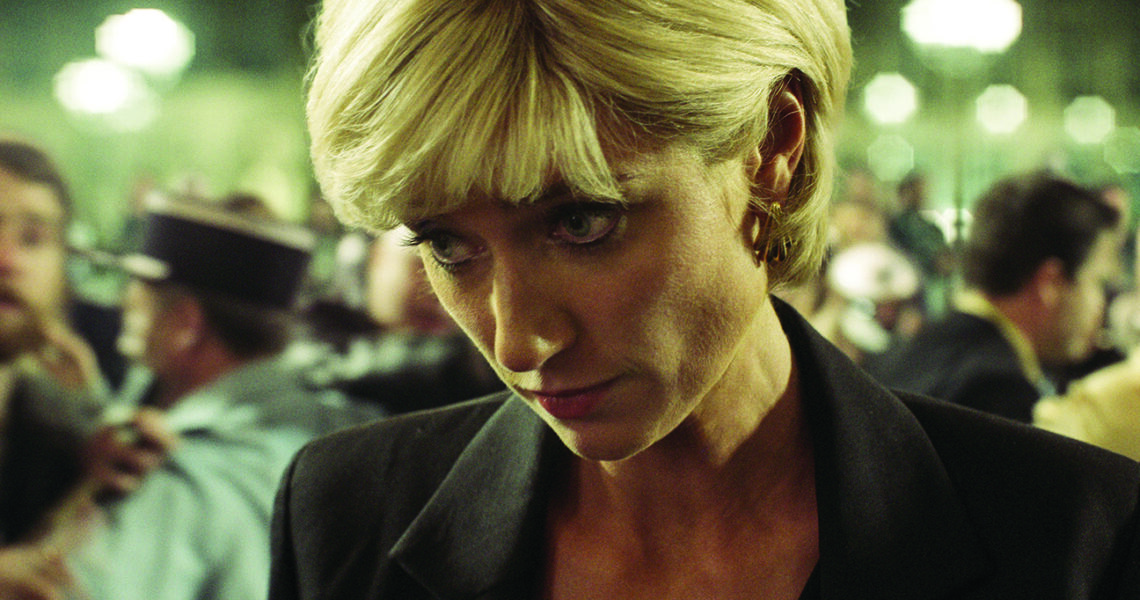Recreating the Night of Princess Diana’s Death
At first glance, it’s hard to see what exactly the VFX team working on “Dis-Moi Oui,” the third episode of the sixth and final season of The Crown, is nominated for in the Emmys’ outstanding visual effects category. “Well, that’s good,” says Ben Turner, visual effects supervisor for the series. “I’ll take that as a compliment.”
Turner worked on The Crown since the start, but the episode depicting the death of Princess Diana (Elizabeth Debicki) is one that stands out to him, not only for its emotional stakes but for the scope of the work itself. “In the latest [season], a lot of our work went into the Diana and Dodi [Khalid Abdalla] love story,” says Turner. “In episode three, our flagship episode, a lot of our work was in Paris. We created a fully CG Place Vendôme, where the Ritz hotel is located.” To create the canvas against which many of the most chaotic scenes, like the relentless mobbing by paparazzi, take place, the team took 360-degree photographs of the iconic square in central Paris. Other than that, the production crew never set foot in the neoclassical courtyard. “Because it’s quite recognizable, we wanted to have it look authentic, and we couldn’t find a location that could be our version of the Ritz,” says Turner. “We also wanted to shoot those scenes away from the public gaze.”
To retain complete control of their environment, a partial set was built on the backlot of Elstree Studios, near London. “It was fairly sizable,” says Turner. “We had the doorway with a little foyer, some steps and a revolving door. It was about 40 feet wide, but beyond that it was just a world of greenscreen.
“The paparazzi on the motorbikes and the crowd, a lot of that is added by us,” Turner continues. “We made up some shop frontage and even created interior windows and had people moving about in some of those buildings in the background to give it that extra layer of reality. We also added cars going through the square and people wandering around in the deep background, just to make it feel alive.”
Courtesy of Netflix
The end of the episode, when Princess Diana and Dodi perish in a car crash, is, surprisingly, a scene that the VFX team was hardly involved in. “We don’t really see [the crash] because it’s all implied,” explains Turner. “[The speeding car] was filmed for real, as it descended down the ramp. We added a bit of light interaction in the tunnel. Because there was a sound effect, we felt there needed to be a little bit of light within the tunnel that could potentially be the car spinning around, but it’s so subtle I don’t think anyone would notice.”
There’s another VFX feat in the episode that Turner’s particularly proud of. In the sequence where Prince William (Rufus Kampa) shoots his first wild stag, the animal is entirely digitized. “We spent a long time working on the subtleties of the animation and making sure the stag was behaving in the right way and doesn’t draw attention to itself,” Turner says. “This scene is really slow and thoughtful. The stag needed to convey the right emotion, almost. It needed to be choreographed so that it’s doing something that looks natural. So, rather than trying to crowbar a bit of wildlife photography into the scene, it ends up being easier to own the whole thing. It can last the right amount of seconds and the stag can dip its head when you want it to dip its head. It’s about being able to make it fit the drama.”
Courtesy of Netflix
The pressure of nailing this episode was not lost on Turner, who worked hard on blending exterior shots from Paris, Barcelona and central London to make that fateful night look as authentic as possible. “Because of the sensitive nature of what we were filming, I really felt an additional weight of responsibility [to have the viewer] not be distracted by the visual effects,” he says. “When the drama is so strong and intense, you don’t want to be bumped out by going, ‘There’s a dodgy bit of VFX there.’ You want to just be immersed in it.”
In the case of “Dis-Moi Oui,” the immensity of the 1997 tragedy remained a stressor throughout the process. “There were some really hard days this [season],” says Turner. “You always want to do your best on this show, but in those moments there’s a feeling in your gut that you just have to keep going until it’s absolutely perfect. And that’s what we did.”
This story first appeared in an August stand-alone issue of The Hollywood Reporter magazine. To receive the magazine, click here to subscribe.

